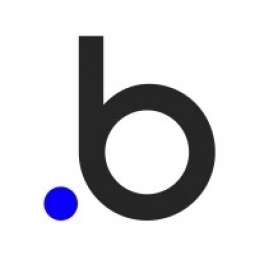技术
- 平台即服务 (PaaS) - 应用开发平台
适用行业
- 水泥
- 教育
适用功能
- 产品研发
服务
- 培训
关于客户
SpokaneTechJobs 专为斯波坎科技初创企业场景而设计。它迎合科技行业的求职者和雇主。求职者可以使用该应用程序来发现正在招聘的当地科技公司,创建个人资料以突出他们的技能,然后申请工作。另一方面,雇主可以索取他们的企业清单并开始发布职位空缺。该应用程序使用地图提供社区的独特视图,帮助用户感受到与城市的联系更加紧密。它还在斯波坎培育了一个更加开放和知识渊博的技术社区。
挑战
Adam Parish 是斯波坎创业界的长期成员,他发现了当地科技就业市场的缺口。他注意到 LinkedIn 和 Indeed 等全球网站让求职者很难了解当地的科技场景并发现正在招聘的人。缺乏专门的本地科技职位列表平台阻碍了斯波坎科技社区的发展。此外,Parish 希望创建一个更加开放和知识渊博的社区,但他不具备开发传统应用程序的编码技能。他需要一个解决方案,让他无需学习编码即可创建用户友好的应用程序。
解决方案
Parish 求助于无代码 Web 应用程序构建器 Bubble 来创建 SpokaneTechJobs,这是一个本地职位列表和公司目录应用程序。他花了一个月的时间“从里到外”学习 Bubble 的平台,这使他能够快速构建自己的应用程序,而无需任何编码。 SpokaneTechJobs 使用地图作为主要视图,提供独特的社区视图,让访客感觉与城市的联系更加紧密。求职者可以创建个人资料来突出自己的技能并申请工作,而雇主可以声明其企业列表并开始发布工作。该应用程序被构建为单页应用程序,使用户体验快如闪电。 Parish 还使用了一些自定义 CSS 来增强应用程序的设计。
运营影响
数量效益

Case Study missing?
Start adding your own!
Register with your work email and create a new case study profile for your business.
相关案例.

Case Study
System 800xA at Indian Cement Plants
Chettinad Cement recognized that further efficiencies could be achieved in its cement manufacturing process. It looked to investing in comprehensive operational and control technologies to manage and derive productivity and energy efficiency gains from the assets on Line 2, their second plant in India.

Case Study
IoT platform Enables Safety Solutions for U.S. School Districts
Designed to alert drivers when schoolchildren are present, especially in low-visibility conditions, school-zone flasher signals are typically updated manually at each school. The switching is based on the school calendar and manually changed when an unexpected early dismissal occurs, as in the case of a weather-event altering the normal schedule. The process to reprogram the flashers requires a significant effort by school district personnel to implement due to the large number of warning flashers installed across an entire school district.

Case Study
Digital Transformation of Atlanta Grout & Tile: An IoT Case Study
Atlanta Grout & Tile, a Tile, Stone & Grout restoration company based in Woodstock, Georgia, was facing challenges with its traditional business model. Despite steady growth over the years, the company was falling behind the web revolution and missing out on the opportunity to tap into a new consumer base. They were using independent software from different vendors for each of their department information and workforce management. This resulted in a lot of manual work on excel and the need to export/import data between different systems. This not only increased overhead costs but also slowed down their response to clients. The company also had to prepare numerous reports manually and lacked access to customer trends for effective business decision-making.

Case Study
Revolutionizing Medical Training in India: GSL Smart Lab and the LAP Mentor
The GSL SMART Lab, a collective effort of the GSL College of Medicine and the GSL College of Nursing and Health Science, was facing a challenge in providing superior training to healthcare professionals. As clinical medicine was becoming more focused on patient safety and quality of care, the need for medical simulation to bridge the educational gap between the classroom and the clinical environment was becoming increasingly apparent. Dr. Sandeep Ganni, the director of the GSL SMART Lab, envisioned a world-class surgical and medical training center where physicians and healthcare professionals could learn skills through simulation training. He was looking for different simulators for different specialties to provide both basic and advanced simulation training. For laparoscopic surgery, he was interested in a high fidelity simulator that could provide basic surgical and suturing skills training for international accreditation as well as specific hands-on training in complex laparoscopic procedures for practicing physicians in India.

Case Study
Implementing Robotic Surgery Training Simulator for Enhanced Surgical Proficiency
Fundacio Puigvert, a leading European medical center specializing in Urology, Nephrology, and Andrology, faced a significant challenge in training its surgical residents. The institution recognized the need for a more standardized and comprehensive training curriculum, particularly in the area of robotic surgery. The challenge was underscored by two independent studies showing that less than 5% of residents in Italian and German residency programs could perform major or complex procedures by the end of their residency. The institution sought to establish a virtual reality simulation lab that would include endourological, laparoscopic, and robotic platforms. However, they needed a simulator that could replicate both the hardware and software of the robotic Da Vinci console used in the operating room, without being connected to the actual physical console. They also required a system that could provide both basic and advanced simulation training, and a metrics system to assess the proficiency of the trainees before they performed surgical procedures in the operating theater.




